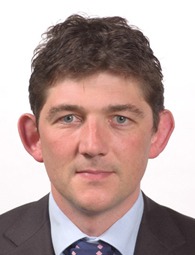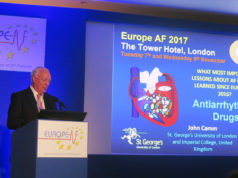
Mark Earley (London, UK) argues that despite the breathtaking progress of interventional electrophysiology in the last 10 years, ablation of persistent atrial fibrillation remains an unconquered summit.
By Mark Earley
While there is a sound pathophysiological basis to support pulmonary vein isolation for ablation of paroxysmal atrial fibrillation, the arrhythmia mechanism for persistent atrial fibrillation is not so clear. The great clinical need though has pushed clinicians to get on and treat patients without a clear idea of the best strategy. Published results are very good using a variety of techniques often including the delivery of long linear lesions and targeting complex fractionated electrograms in addition to pulmonary vein isolation. Research that addresses the mechanism of persistent atrial fibrillation then is most welcome.
Recent work has thrust the “rotor” back to centre stage. Jalife’s ovine optical mapping work challenged the long held doctrine that atrial fibrillation is sustained by multiple independent wavefronts, meandering around the atria and following relatively random pathways determined by the excitability and refractoriness of the cells.
Detailed, simultaneous, global, endocardial mapping of atrial fibrillation in the intact human heart, however, is not easy to achieve and we have had to rely on mapping limited areas of the epicardial aspect of the atria during cardiac surgery. These “plaque array” studies have consistently revealed local activation to be highly dynamic and heterogeneous with stable re-entry circuits or indeed rotors uncommon. The plaque array, however, cannot see the whole picture so it seems to be a key step forward that it is now possible to record global activation from a limited set of intracardiac electrograms (RhythmView, Topera Medical) or body surface electrograms (ECVUE, CardioInsight). Although these technologies seem very different, inherently they both use a mathematical algorithm to reconstruct activation over the entire atria and have offered insights into the mechanism of atrial fibrillation. Using Constellation catheters that have 64 electrodes deployed on eight splines, in the left and right atria, Narayan et al (J Am Coll Cardiol 2012;60: 628–36) demonstrated the presence of rotors or focal impulses in nearly all patients and in 56% of patients was able to terminate atrial fibrillation by targeting these rotors with a median of 2.5 minutes of radiofrequency energy. Perhaps even more exciting is the initial case report from Haissaguerre et al (J Cardiovasc Electrophysiol 2013 24:711–717) that showed that by using the completely non-invasive body surface mapping he was able to identify a rotor driving persistent atrial fibrillation and with 10 minutes of radiofrequency energy targeting that area organise atrial fibrillation into an atrial tachycardia from which sinus rhythm was restored by ablation in the tricuspid valve inferior vena cava isthmus.
It is very exciting to have simple solutions for ablation of persistent atrial fibrillation within our grasp; however, to an invasive electrophysiologist who has spent many years trying to achieve this, it seems too good to be true!
The algorithms that can reconstruct global activation from relatively few independent recordings are unsurprisingly difficult to understand and for commercial reasons the technology has not yet been widely released. It is also not possible to reconcile the contradictory findings of detailed epicardial contact mapping (albeit with a limited field of view) with the findings of global mapping. The proof of the pudding of course will be in the eating and the sooner these technologies are available to the wider population of electrophysiologists the sooner a judgement can be made.
Mark Earley is consultant cardiologist, St Bartholomew’s Hospital, London, UK. He spoke on this subject at the Heart Rhythm Congress (Birmingham, UK, 20–23 October 2013)












